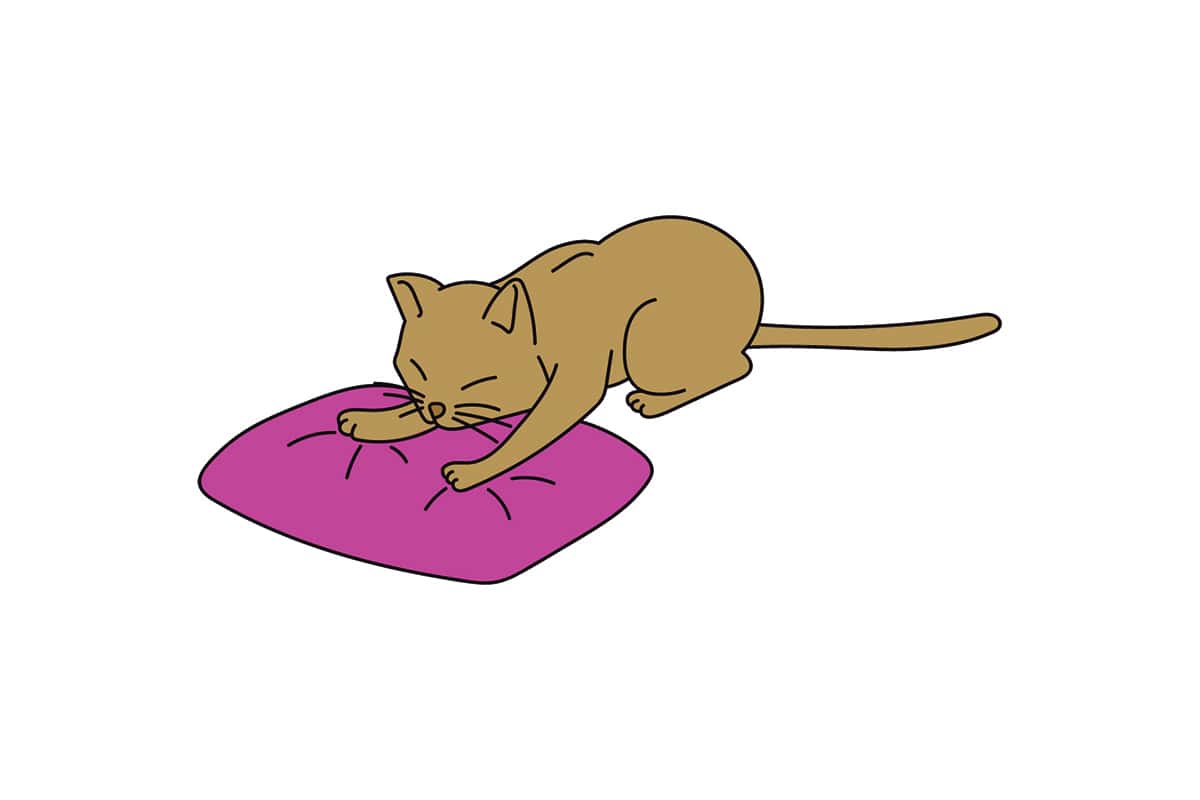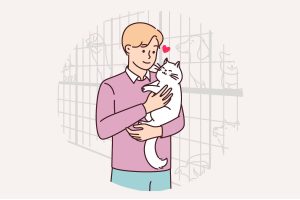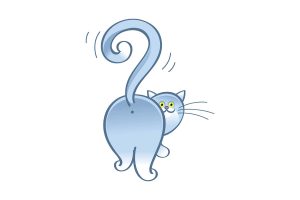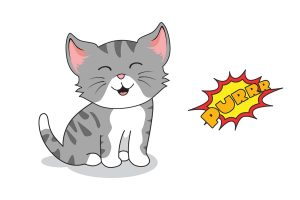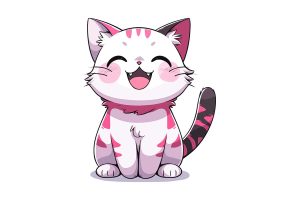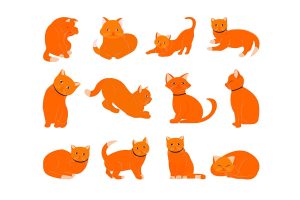Have you ever watched your feline friend mysteriously press their paws into your lap or a soft blanket and wondered what’s going on in their furry head? This peculiar behavior, known as kneading, is a common trait among cats.
Cats knead with their paws as a comforting behavior stemming from kittenhood, where kneading was a way to stimulate milk flow from their mother. This instinctual activity signifies contentment, marks territory through scent glands in their paws, and prepares a cozy spot for resting.
In this guide, we’ll learn more about your cat’s kneading habit. We’ll also cover variations in kneading behavior and what it can mean in different contexts.
What Is Kneading?
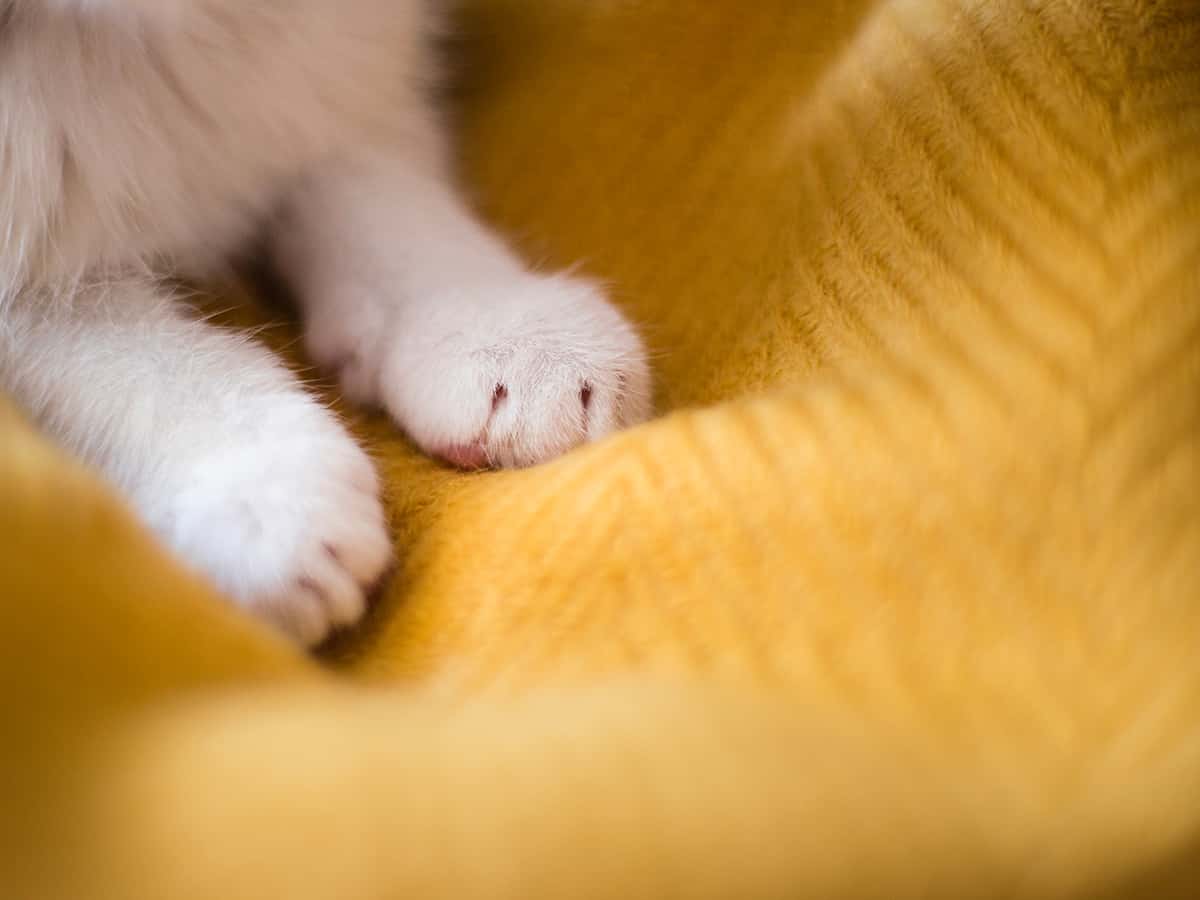
Kneading is a quirky but utterly adorable behavior that’s common in the feline world. It’s a behavior that starts in kittenhood. Imagine those tiny paws pressing down rhythmically, alternating left and right with a focus that would put a seasoned baker to shame.
What may be concerning to some is when your cat’s claws pop out during a kneading session. When the claws come out during kneading, it’s not a sign of aggression. It’s more about getting a good stretch in those paws and claws. It just so happened that your skin was in the way.
Why Do Cats Knead with Their Paws?
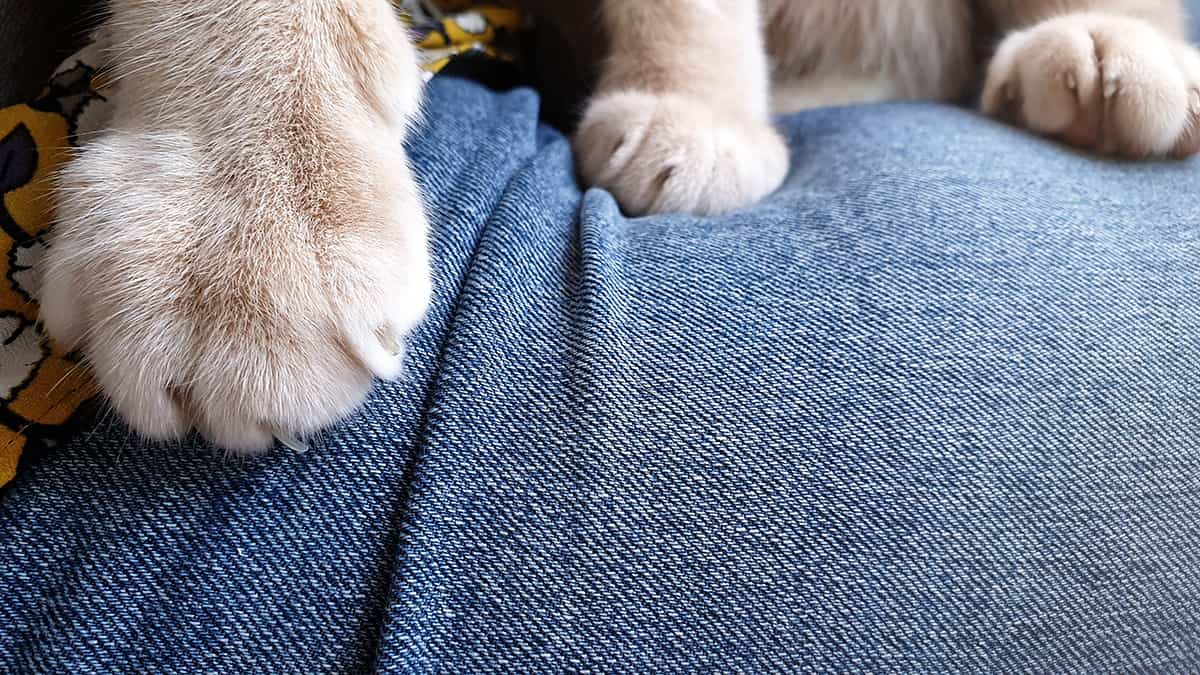
Now that we know what kneading is, what are the reasons behind this peculiar feline behavior? Believe it or not, there’s more than one reason why your pet can treat your tummy like a pile of dough.
1. Comfort and Contentment
At its heart, kneading is all about comfort. It’s a throwback to kittenhood when they kneaded their mom’s belly to stimulate milk flow. Fast forward to adulthood, and they’re kneading on soft surfaces (or you) to recreate that warm, fuzzy feeling of safety and satisfaction.
2. Marking Territory
Cats are territorial creatures, and kneading is one of their subtler ways of creating personal borders. Thanks to scent glands located in their paws, every press leaves behind their unique stamp. While you may not catch a whiff of its distinct smell, other cats—friend and foe alike—will know.
3. Prepping the Perfect Nap Spot
Ever watched your cat knead before settling down for a nap? They’re not just being picky; they’re using their paws to create the perfect snoozing spot. It’s sort of like how humans fluff up a pillow before plopping their heads onto it. In the wild, this behavior might have helped to make a soft sleeping surface or scare away any critters hiding in the foliage.
4. Showing Affection
Kneading is also a big heart emoji from your cat. When they knead on you, it’s a sign of trust and affection. They’re comfortable in your presence and want to show it in the most natural way they know how—through the power of paws.
5. Stress Relief
Cats use kneading as a way to relax. The rhythmic motion is soothing for them, helping to reduce stress and create a calm atmosphere. So, next time your cat starts kneading, remember they’re just chilling out in their own feline way.
Variations in Kneading Behavior
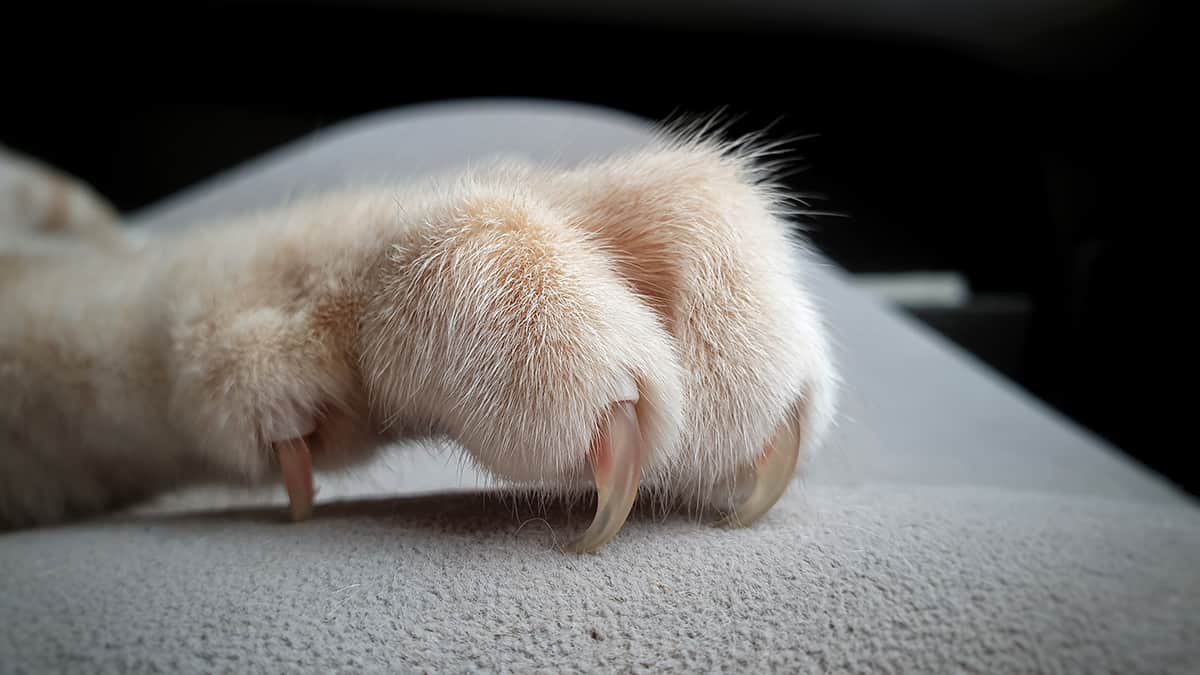
Just like people, cats have their own unique set of quirks. There’s a whole spectrum of kneading behaviors, each as individual as the cats themselves.
1. Individual Preferences
Some cats are all about that knead life, while others seem to hardly bother. And when they do knead, the intensity and duration can vary widely. Some might gently press their paws into a soft blanket with the lightest touch, while others might go full-throttle. It’s all about personal preference—your cat’s, not yours.
2. Breed-Specific Behaviors
Did you know that certain cat breeds show distinct kneading patterns? For instance, Siamese cats are known for being quite vocal about their kneading sessions. Meanwhile, Maine Coons, with their large paws, might seem like they’re setting up for a deep-tissue massage session.
3. Comfort Objects
Cats also have their favorite kneading spots. While one might prefer the softness of a plush blanket, another might choose your lap every single time. And then there are the cats that form a special attachment to a specific object, like a stuffed toy or a pillow.
Kneading in Different Contexts
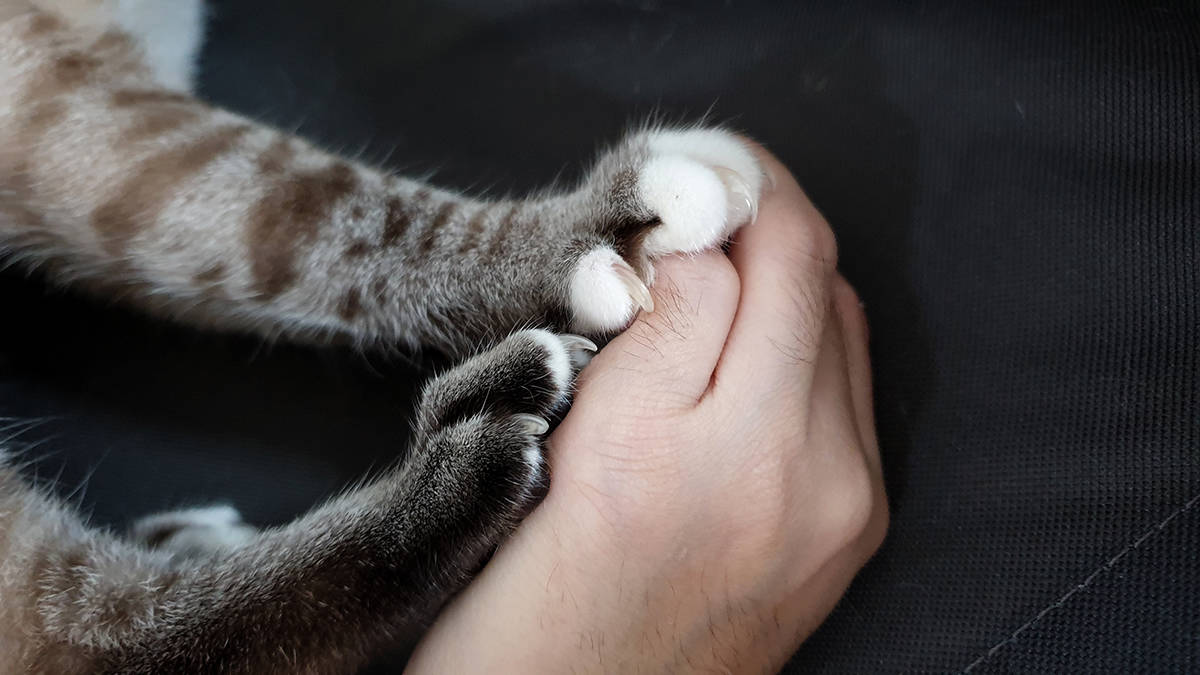
Cats don’t just knead for the sake of kneading. Their kneading habits change with the scenery, time of day, and even their mood.
1. Kneading While Receiving Attention
Consider it a compliment of the highest order. In cat language, it’s their way of reciprocating the love. It’s a heartwarming exchange of affection, even if it occasionally comes with the surprise addition of claws.
2. Kneading on Different Surfaces
Cats aren’t one-surface wonders. From the softness of your new sweater to the unexpected choice of a hard book cover, each surface offers a different texture and experience. It’s all part of their endless quest for the kneading nirvana.
- Seasonal Kneading Patterns
Your cat may adjust its kneading habits with the seasons. During colder months, you might find it kneading more often, seeking warmth and comfort. As the weather warms up, it might not feel the need to nest as much.
FAQs
1. Can kneading indicate any health issues?
Kneading usually isn’t a red flag for health issues. It’s a normal, cozy cat thing. But, if you notice your kitty kneading non-stop or showing signs of discomfort while doing it, it might be worth a chat with the vet. Sometimes, they’re just extra lovey-dovey, other times they might need a check-up.
2. Do wild cats knead?
Yes, wild cats knead too! It’s not just a domestic diva thing. From big lions to solitary bobcats, they all enjoy a good knead. It’s hardwired into them—a comforting habit they carry from being tiny furballs in the wild.
3. How much is too much kneading?
“Too much kneading” is hard to define, but you know it when you see it. If your cat’s kneading is more like an all-day marathon and less like a brief “making biscuits” session, and especially if it seems obsessive or stressed, it might be time to see why they’re feeling extra needy.,
